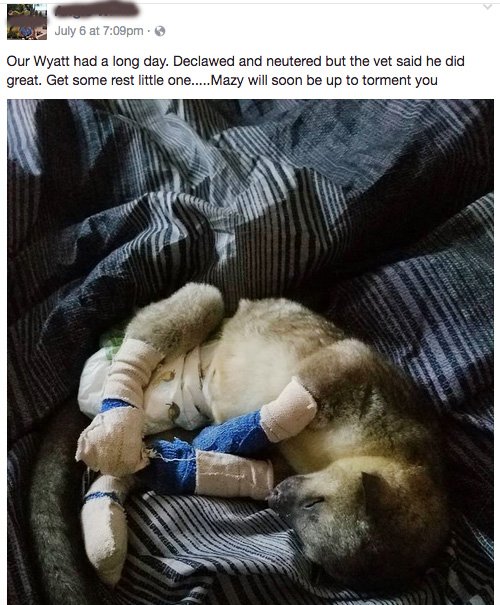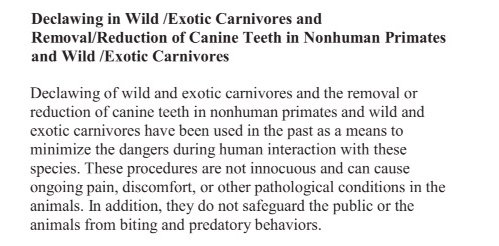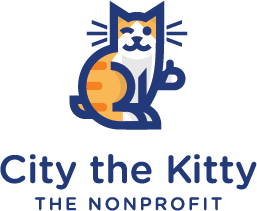August, 2017
This is a Public Service Announcement and story to educate the public about how a declawing procedure is done. It is ALWAYS an amputation procedure. You cannot just remove a nail from a dog, cat, or kinkajou without it growing back.
A supporter sent me this picture that a kinkajou owner posted on facebook. The owner said in a comment that she had her kinkajou 4 paw declawed because, “the declawing allows us to give them (she had another kinkajou named Mazy declawed) more freedom in the home. She said that her mom is on blood thinners and the kinkajou would “inadvertently” claw her. She said that her mom would , “help me bathe her, clip her nails or even play with her and she’d get cut up and bleed.”

This owner also said, “only his nails were lasered off. His toes are intact,” in a comment on facebook.

I wanted to know if it was true that kinkajous only have their nails taken off when they are declawed. I had a researcher look into this with a phone call to the vet that declawed both both her kinkajous. They asked the receptionist if they could get their kinkajou 4 paw declawed and how much it would be. The employee on the phone said that it was around $578 and that Dr Matthew Stone had just done one last week. The researcher asked if Dr Stone just removed the nails or if the whole bone was removed.
The receptionist said, “If he knows what he’s (Dr Stone) doing and he takes the claw off below the nail bed, it doesn’t really matter if we take the whole first digit or not. I can’t tell you if they do or don’t.” The researcher said that they would like the receptionist to ask Dr Stone which way it is performed and called back on another day. The receptionist checked with him and said he, “cuts the whole first digit off. They seem to be fine.”
I sent a note to the owner of the kinkajous and asked her if Dr Stone told her that he was just removing the nails. I asked her if he counseled her on the humane and commonsense alternatives to declawing.
She wrote back, “I’m sorry I nor my husband agree with you. Have you ever owned a kinkajou? Claws are non retractable so common sense is used. We tried nail caps, trimming and filing and she would still inadvertently claw us. The fact is that it’s done and they’re both happy and doing well. And the vet and his team were great.”
I asked her once again if Dr Stone educated her about the declawing process and how the last bone is removed.
She wrote back, “Believe it or not I am a big advocate for animal rights. I understand your concern but we had reasons for doing it and put time and thought in to the decision. They’re our pets and the procedure is done. And just an fyi…yes he was bandaged up but that was so he couldn’t pick at his feet. He was up moving around like nothing happened the next day.”
She wouldn’t answer my important question if Dr Stone told her it was an amputation procedure. She just said, ” I have no comment. I have no problem with Dr. Stone.” She said that she doesn’t want any part of my story and then also asked me if I believe in spaying and neutering and if that is mutilating.
Here’s a review from this kinkajou owner about Dr Stone’s practice, Animal Hospital of South Carolina. 
I decided to reach out to the vet, Dr Matthew Stone, at Animal Hospital of South Carolina, to ask him some questions about declawing kinkajous and about what this kinkajou owner said.
I called the practice where he worked and asked for an email for Dr Stone. The receptionist gave me one and said that he checks it often so he should get back with me soon.
I wrote an email telling him who I was and asked him if he counseled this kinkajou owner about how declawing is performed. I also sent him this info from the USDA about declawing kinkajous. 
I received an email back with no name on it that said,
Since I didn’t get an answer, I wanted to make sure that he didn’t want to provide a statement for my story that I was going to do about kinkajous and declawing.
I sent Dr Stone another email and I told him that I must educate the public about the fact that exotic animals like kinkajous are also declawed and it’s done the same way that vets do it to cats which is amputating the last bone in the animal’s paw. I asked him what he considered “pros” for a declaw.
I also said this, “Also I think you are incorrect about the vet profession cutting back on laser declaws. I’m in the trenches and work 16 hr days with this cause and see lots of instances of vet practices promoting their laser declaws because it is more humane, quicker healing, and less invasive which is all such a lie. Of course all of the vets who buy those $35,000 lasers have to do a lot of declaws to pay them back.
The President of the AAFP’s practice says that declawing with a laser is actually worse because it “because it can, “scar the tissue really bad, it can burn the tissue and there can be delayed healing as a result of that.” More about this story- https://citythekitty.org/
I received an email back that said, “We are also not interested in being part of your story. We are under the impression that you intend to disparage us either way.
However, we would like to educate you on veterinary suicide rates. Unfortunately the veterinary profession has suicide rates of 2-5x the general public. This is often due to cyber bullying and client financial constraints, as well as low pay with large student loan burdens.
We suggest putting pressure on AAFP to specifically condemn declawing, or perhaps your local legislature.”
I wrote him back and said,
Thanks but I don’t need suggestions on how to go about this cause. I’ve been exposing AAFP’s, AAHA’s, AVMA’s, and other vet associations unethical and hypocritical ways for years. They are all about protecting the welfare of their pocketbooks and their vet’s pocketbooks more than they care about the welfare of cats.
Plus the vet associations use all their money to stop the anti-declawing bills so their vets can keep profiting from this inhumane procedure.
That’s why I still need to do this important story to educate the public.”
Lori and City the Kitty
I received two emails in response to my note. One said, “Sounds good” and the other said, “We wish you good luck with your book sales. But we request you stop contacting us immediately. We are busy helping clients and animals.”
——————————————————————————————————————————
Please don’t threaten or be rude to anyone involved. We must do the right thing and take the high road and be respectful. It is wrong to threaten them in any way plus they will twist things around and play the victim. We know that the only victims are all the kitties that are being unnecessarily and cruelly declawed. We MUST continue to shine light on this cause and share all of these stories so that we show the truth about what is going on. We MUST continue to educate cat, dog, and kinkajou owners that declawing is an amputation surgery and is very harmful to the health and well being of their pet and how there are humane alternatives that they can use instead of declawing.
The way that we make positive change is through peaceful and respectful actions and words. When you lash out and are threatening, it hurts our important cause and makes us all look bad, and in turn saves less kitties from this very cruel and inhumane procedure.
